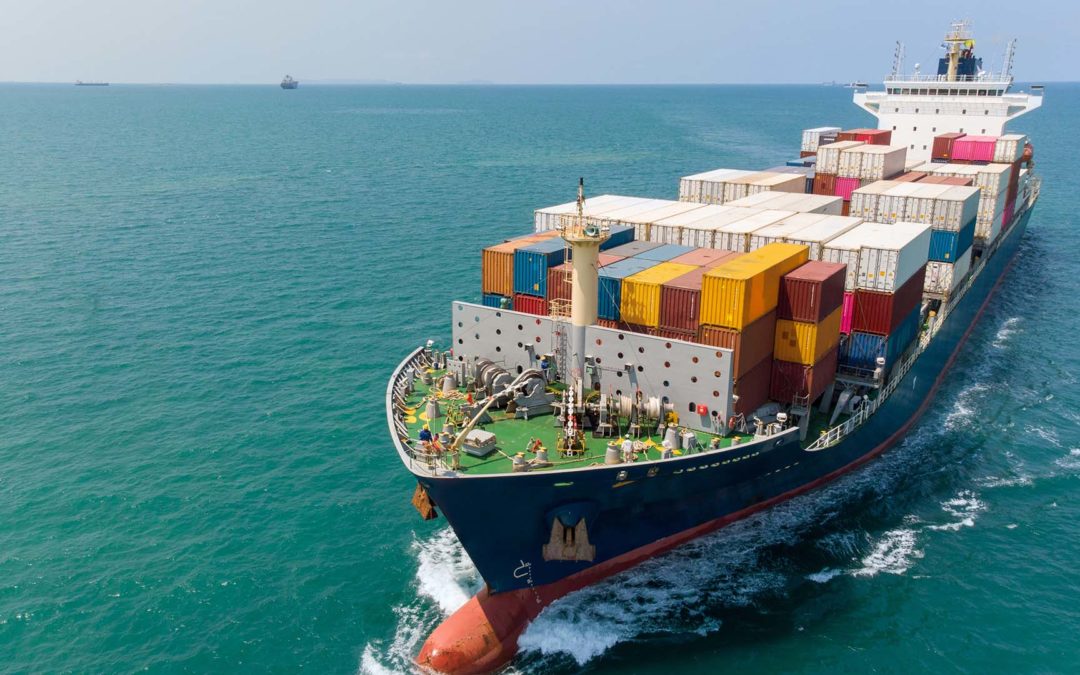Here’s an update on the key ocean shipping trends to watch as we move into the busiest shipping season of the year.
With peak shipping season underway, port officials across the nation want to avoid a repeat of last year, but issues still remain, according to CSCMP’s Supply Chain Quarterly. It says volume is already ramping up at the ports of Long Beach and Los Angeles, which are the gateway for 35% to 40% of the seaborne containerized cargo coming into the US.
At the Port of Long Beach, June volumes reached 835,412 TEUs (twenty-foot equivalent units), up 15.3% from the same month last year and surpassing the previous record set in June 2018, the publication reports.
“For the first half of 2022, the port moved 5,007,778 TEUs, up 5.3% from the same period last year,” it adds. “The second quarter also was the port’s best quarter overall, with 2,547,119 TEUs moved from April 1 to June 30, breaking the previous record set during this year’s first quarter.”
These and other dynamics are adding to the unpredictability for shippers that want to secure reliable capacity at reasonable rates. “At the same time,” CSCMP Supply Chain Quarterly reports, “they face lingering congestion concerns at ports, many of which are facing record volume levels.”
For example, Land O’Lakes’ Nicholas Najjar tells the publication that his company has “rewritten processes, adopted new tactics, taken over some activities once done by their forwarders and customers, and offloaded others to those partners with an eye toward more collaborative, efficient, and timely execution.”
He advises other shippers to follow suit and be prepared to change your script. “We’ve pulled out all the stops to see where we have success,” Najjar tells the publication. “Everything is moving so fluidly, you have to stay on top of it daily.”
According to CNBC, a decline that shippers were seeing in ocean spot rates and in premium surcharges across many trade routes as demand for containers softened has reversed. Now, it says congestion at ports and at sea are increasing container spot prices for the U.S./Europe trade route and creating a floor in spot rates for the Asia to East Coast shipments.
“Ocean spot rate pricing trends flow through to the broader economy, as retailers have passed on container prices to the consumer during the pandemic,” CNBC explains, “and it is among inflationary pressures as the Federal Reserve tries to tamp down demand.”
The situation continues to shift as trade routes experiencing congestion are seeing container rates moving higher. “Global shippers should be prepared for volatility in the coming quarters,” Xeneta’s Peter Sand tells CNBC. “I think patience is required, not only in terms of understanding how market dynamics constantly develop, but certainly also to realize that no two markets are alike.”
A recent Logistics Management roundtable with three ocean cargo experts gives shippers an inside look at what’s going on with the ocean shipping environment right now. Asked whether the rates that were elevated during the pandemic are “sticking” or not, Drewy’s Philip Damas said spot rates have been declining slowly, but steadily every week since February.
“On some routes, spot rates are now below contract rates, and some importers are starting to ask ocean carriers and NVOCCs [non-vessel operating common carriers] to reopen [i.e. reduce] previously agreed freight rates,” Damas told Logistics Management. “To our knowledge, carriers have mainly refused to do this and contract rates are mainly sticking.”
In the same roundtable, ocean expert Jon Monroe said that in many cases, carriers implemented short-term contract amendments. This allowed customers to use the reduced spot rates and meant that the carriers could keep existing contracts and rates rather than renegotiate their contracts. “The ocean carriers have initiated blank sailings to stabilize rates,” Monroe points out. “Whether or not we’ve reached bottom yet will depend a lot on the demand.”
.jpg)
So, what can shippers do to survive and compete amid the current uncertainty? CNBC says that some are spreading their cargo volumes over the remainder of the year so they won’t get caught short during peak, while others are “adopting a strategy centered around flexibility and increased visibility.”
IntelliTrans’ Global Control Tower provides high levels of supply chain transparency; aggregates, completes, and enhances data from a variety of sources; offers visibility into and execution of different aspects of the supply chain; and generates data-driven alerts and analytics that ask deeper questions and deliver meaningful insights.
By leveraging tracking information, the Global Control Tower provides analytics that measures key performance indicators (KPIs) like fleet cycle time, origin/destination dwell time, lane and hauler performance, back orders, freight spend, load optimization, and more. With their rate, equipment, lease, tracking, and invoice data in a central repository that’s accessible 24/7, companies can position themselves for success in any market conditions.

